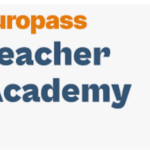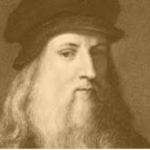
Instructions
Watch the video “Renaissance-Overview-Goodbye-Art Academy”, created by Artist Phil Hansen, on YouTube to get an idea of Renaissance art.
Now do the following task:

Instructions
Watch the video “Renaissance-Overview-Goodbye-Art Academy”, created by Artist Phil Hansen, on YouTube to get an idea of Renaissance art.
Now do the following task:

Συζητήσαμε διεξοδικά το θέμα της Βιώσιμης Ανάπτυξης. Μάθαμε για τα σύγχρονα αναπτυξιακά μοντέλα και τη στάση των διαφόρων κρατών. Μελετήσαμε τις επιπτώσεις που έχει στο περιβάλλον η αναπτυξιακή πορεία μιας χώρας. Διερευνήσαμε την πιθανότητα υιοθέτησης ενός νέου τρόπου ζωής και μοντέλου ανάπτυξης. Αναφερθήκαμε σε σημαίνουσες συμφωνίες κρατών για τη βιώσιμη ανάπτυξη και στις προϋποθέσεις της. Τέλος, σταθήκαμε στους 17 Στόχους της όπως αυτοί καθορίστηκαν από τη Γενική Συνέλευση των Ηνωμένων Εθνών στη Νέα Υόρκη το Σεπτέμβριο του 2015.

Παρακολούθηση επιμορφωτικού σεμιναρίου με θέμα την Περιβαλλοντική Εκπαίδευση από καθηγητές του Πειραματικού Γενικού Λυκείου Ρεθύμνου Π.Κ.
Αυτή τη φράση που ανήκει στον αρχαίο νομοθέτη Σόλωνα, έναν από τους επτά σοφούς, και την οποία χρησιμοποιούσε για να τονίσει ότι η μάθηση δεν σταματά στις εγκύκλιες σπουδές, αλλά συνεχίζεται σε όλη τη ζωή του ατόμου, έχει ενστερνιστεί η σχολική κοινότητα του Πειραματικού Λυκείου που είναι πάντα πρόθυμη ν’ ανοίξει τους ορίζοντές της, να εξελιχθεί και να διαπρέψει σε ποικίλους τομείς.
Έτσι, στο πλαίσιο του Ευρωπαϊκού Προγράμματος Erasmus+ με τίτλο “Go Green – Safe Screen” και κωδικό αριθμό 2022-1-EL01-KA122-SCH-000075677, δύο καθηγήτριες της σχολικής μονάδας, οι κκ. Μαρία Καρινιωτάκη, Μαθηματικός, και Αμαλία Χόμπη, Καθηγήτρια Αγγλικής Γλώσσας, παρακολούθησαν σεμινάριο με τίτλο “Environmental Education: Learning and Acting for a Better Future” (Περιβαλλοντική Εκπαίδευση: Μάθηση και δράσεις για ένα καλύτερο αύριο) που διοργάνωσε ο φορέας Europass Teacher Academy στη Φλωρεντία της Ιταλίας από την 16η έως και την 20η Οκτωβρίου 2023.
Κατά την πρώτη μέρα των εργασιών, η εκπαιδεύτρια ενηλίκων, κ. Tamara Slovinská, καλωσόρισε τους συμμετέχοντες, τους ενημέρωσε για το περιεχόμενο του σεμιναρίου και τα αναμενόμενα μαθησιακά αποτελέσματα, και τους ενέπλεξε σε δραστηριότητες γνωριμίας όπως τα Όνομα και Κίνηση και Ανθρώπινο Bingo.Στη συνέχεια, έγινε η παρουσίαση των σχολείων των συμμετεχόντων που βρίσκονται στη Γερμανία, Ελλάδα, Κροατία και Σλοβακία και των διαφόρων δραστηριοτήτων τους. Ακολούθησαν δύο εργαστήρια σχετικά με την κλιματική αλλαγή και τον προβληματισμό που προκαλεί στη διεθνή κοινότητα στα οποία οι εκπαιδευτικοί κλήθηκαν ν’ αναζητήσουν τις αιτίες και να παρουσιάσουν την τωρινή κατάσταση και τις επιπτώσεις της.
Κατά τη δεύτερη μέρα, οι επιμορφούμενοι ασχολήθηκαν τόσο με την Επιστήμη που σχετίζεται με την κλιματική αλλαγή και τις επιπτώσεις της σε ατομικό επίπεδο, όσο και με την κλιματική δικαιοσύνη (Climate Justice), έναν όρο που χρησιμοποιείται για να γίνει αναφορά στην υπερθέρμανση του πλανήτη ως ένα πρόβλημα ηθικό και πολιτικό και όχι μόνο περιβαλλοντικό. Στη συνέχεια, συζητήθηκε η Βιώσιμη Ανάπτυξη (Sustainable Development) και τέθηκε το ερώτημα για ποιους είναι βιώσιμη. Τέλος, έγινε μια κριτική προσέγγιση της διδασκαλίας των 17 Στόχων της.
Την τρίτη ημέρα, η ομάδα ασχολήθηκε με τους κοινοτικούς κήπους (community gardens) και αναζήτησε τους λόγους για τους οποίους αυτοί θα μπορούσαν να είναι πολύ ωφέλιμοι. Ακολούθησε επίσκεψη στον κοινοτικό κήπο Orti Dipinti της πόλης, όπου ο κ. Giacomo Salizzoni, υπεύθυνος του σχεδίου, μίλησε για θέματα φυτολογίας, κηπουρικής, διατροφής και βιωσιμότητας, επιτρέποντας στο ακροατήριο να εμβαθύνει τις γνώσεις του.
Την τέταρτη ημέρα, μελετήθηκε το θέμα της βιωσιμότητας (sustainability) και της συστημικής σκέψης (systems thinking), ένα σύνθετο τρόπο συλλογισμού κατά τον οποίο τα πράγματα γίνονται καλύτερα αντιληπτά τοποθετώντας τα μαζί, παρά χωρίζοντάς τα, και ο οποίος χρησιμοποιεί το μοντέλο ενός συστήματος για να ερμηνεύσει τα γεγονότα. Στα εργαστήρια που ακολούθησαν εξετάστηκε το θέμα της κρίσης των πλαστικών και οι συνέπειες μιας τέτοιας ρύπανσης και οι επιμορφούμενοι κλήθηκαν να παρουσιάσουν πιθανές λύσεις του προβλήματος και δράσεις που επιβάλλεται να γίνουν τόσο σε ατομικό όσο και σε συλλογικό επίπεδο. Εκτός από αυτά, έγινε εκτενής συζήτηση σχετικά με τη «Γρήγορη Μόδα» (Fast Fashion), όρος που αναφέρεται στην πρακτική των εταιρειών να φτιάχνουν ρούχα και αξεσουάρ που ανταποκρίνονται άμεσα στις τρέχουσες τάσεις της μόδας, ακολουθώντας την πιο οικονομική και αποδοτική διαδικασία παραγωγής, και την επίδρασή της σε περιβάλλον και ανθρώπους.
Την τελευταία ημέρα, μελετήθηκαν τα θέματα της διαδικασίας μετάδοσης ψευδούς εντύπωσης ή παραπλανητικών πληροφοριών σχετικά με το πώς τα προϊόντα μιας εταιρείας είναι φιλικά προς το περιβάλλον (Greenwashing), του σχεδιασμού διαφόρων ειδών δράσεων για το κλίμα από τους μαθητές και των τρόπων διευκόλυνσης των συνακόλουθων εκστρατειών τέτοιων δράσεων. Ακολούθησε η σύνοψη και η αξιολόγηση του σεμιναρίου και η απονομή των βεβαιώσεων.
Όμως, η απόκτηση νέας γνώσης, η οποία θα αξιοποιηθεί στον Όμιλο Building Environmental Democracy και περιλαμβάνεται στο Padlet Environmental Education: Learning and Acting for a Better Future (https://padlet.com/EUROPASS22/environmental-education-learning-and-acting-for-a-better-fut-rjpizr6dqlsrye5r), δεν ήταν ο μοναδικός στόχος του σεμιναρίου. Η δικτύωση και η ανταλλαγή απόψεων και ιδεών από εκπαιδευτικούς διαφορετικών χωρών, βαθμίδων εκπαίδευσης και ειδικοτήτων βοήθησε πολύ στην επαγγελματική εξέλιξη και την καλλιέργεια της διαπολιτισμικής συνείδησης, και αποτέλεσε έναυσμα μελλοντικών συνεργασιών στον τομέα των σχολικών συμπράξεων.
Τέλος, ας συμειώσουμε ότι το σεμινάριο πραγματοποιήθηκε στη Φλωρεντία, την ιταλική πόλη που προκαλεί δέος στους επισκέπτες με την ανείπωτη ομορφιά της, κι εκείνη στην οποία ο χρόνος έχει για πάντα σταματήσει στην περίοδο της Αναγέννησης, σ’ έναν κόσμο ιδανικά ζωγραφισμένο από τα χέρια του Botticelli, σε μία εποχή καλυμμένη με περίτεχνες νωπογραφίες, μπαρόκ και αρχιτεκτονικά θαύματα.

Crime and Punishment (Russian: Преступлéние и наказáние, tr. Prestupleniye i nakazaniye, IPA: [prʲɪstʊˈplʲenʲɪje ɪ nəkɐˈzanʲɪje]) is a novel by the Russian author Fyodor Dostoyevsky. It was first published in the literary journal The Russian Messenger in twelve monthly installments during 1866.[1] Later, it was published in a single volume. It is the second of Dostoyevsky’s full-length novels following his return from 5 years of exile in Siberia. Crime and Punishment is considered the first great novel of his “mature” period of writing.[2]
Crime and Punishment focuses on the mental anguish and moral dilemmas of Rodion Raskolnikov, an impoverished ex-student in Saint Petersburg who formulates and executes a plan to kill an unscrupulous pawnbroker for her cash. Raskolnikov, in an attempt to defend his actions, argues that with the pawnbroker’s money he can perform good deeds to counterbalance the crime, while ridding the world of a vermin. He also commits the murder to test a theory of his that dictates some people are naturally capable of such actions, and even have the right to perform them. Several times throughout the novel, Raskolnikov compares himself with Napoleon Bonaparte and shares his belief that murder is permissible in pursuit of a higher purpose. Read more
What is a reading club?
A reading club is a group of people who have agreed to meet at regular intervals (usually once a month) to discuss books which they have all decided to read.
In effect, a reading club is a group of people who get together to read and discuss books, accepting a simple schedule for its operations.
It is an extremely simple, and increasing popular way to cultivate a creative relationship with reading, and a pleasant and constructive means of spending one’s free time.
One can encounter various types of literature or choose a specific subject matter. Below is a list of clubs dealing with mathematical literature which exist in Greece. How can you set up a club dealing with philosophy? Everything depends on the interest shown by its members.
https://www.youtube.com/watch?v=42PwXAa9HcY
Collaborative learning is a situation in which two or more people learn or attempt to learn something together. Unlike individual learning, people engaged in collaborative learning capitalize on one another’s resources and skills (asking one another for information, evaluating one another’s ideas, monitoring one another’s work, etc.). More specifically, collaborative learning is based on the model that knowledge can be created within a population where members actively interact by sharing experiences and take on asymmetry roles. Put differently, collaborative learning refers to methodologies and environments in which learners engage in a common task where each individual depends on and is accountable to each other. These include both face-to-face conversations and computer discussions (online forums, chat rooms, etc.). Methods for examining collaborative learning processes include conversation analysis and statistical discourse analysis.
Thus, collaborative learning is commonly illustrated when groups of students work together to search for understanding, meaning, or solutions or to create an artifact or product of their learning. Further, collaborative learning redefines traditional student-teacher relationship in the classroom which results in controversy over whether this paradigm is more beneficial than harmful. Collaborative learning activities can include collaborative writing, group projects, joint problem solving, debates, study teams, and other activities. The approach is closely related to cooperative learning.
For more information read the following article
Collaborative learning (From Wikipedia, the free encyclopedia)
or watch the following video
[teachertube collaborative-learning-186234]

